False honey agaric autumn. The clinical picture of honey mushroom poisoning
Maybe even an experienced mushroom picker. Search only edible mushrooms is not a panacea. Often, in appearance, ordinary mushrooms can carry a mortal danger if false mushrooms are not recognized in them in time.
Types of false mushrooms
There are several types of false mushrooms that are found almost everywhere:
- sulfur yellow,
- brick red,
- honey agaric Candola.
All of them cause poisoning with false mushrooms with serious consequences up to death.
The sulfur-yellow look is the most insidious, because it is he who looks like real mushroom more than the rest. In order not to be mistaken, the experts silent hunting'recommended to carefully study appearance mushroom, as the fake mushroom has a brighter hat. It does not have characteristic scales, but the hat has received a yellowish or reddish tint. One more hallmark there was a lack of a film in a poisonous representative, while an edible mushroom received it in the area of \u200b\u200bthe junction of the cap and leg. The sulfur-yellow honey agaric has brown or brownish plates under the hat, and real mushrooms have received almost white plates.
If by your own negligence inedible mushroom nevertheless got to the table, then, in order to avoid danger, you should carefully taste the dish based on it. Poisoning with false mushrooms can be prevented if, during the test, having felt a bitter taste, throw everything away without regrets. Most often, pseudo mushrooms grow in the forest zone somewhere in the area of \u200b\u200brotten stumps or close to them. Growth time falls on absolutely all seasons except winter.
No less dangerous is the brick-red fake honey agaric. Its feature is a hat with a reddish tint, as well as plates under it. yellow color(at first) and olive, brown (later). You can meet him near the stumps or right on them in August-September, but under favorable weather conditions, they germinate in July.
It is a little easier to distinguish Candol's honey agaric from other dangerous counterparts, since its cap has a specific watery structure, quickly cracking when broken. White elements hang from the edges of the hat, and the plates under the hat have a gray-pink or even dark purple hue. The leg at the top is shaggy.
You can meet Candol mushrooms close to the rotten bark of a tree. It’s worth waiting for a trick from him from spring to autumn.
Characteristic symptoms
Poisoning with false mushrooms often occurs due to the ingestion of a whitish liquid in the pulp into the human stomach, which is called "burning juice". After the pseudomushroom enters digestive system, signs of intoxication begin to appear within an hour. Less commonly, the process stretches for a longer period (up to 6 hours).
The main symptoms of the ingestion of false foam poison into the body are considered to be signs similar to ordinary food poisoning:
- a sharp deterioration in well-being,
- lethargy,
- nausea, flowing into occasional vomiting,
- diarrhea,
- pain in the abdomen and other discomfort.
Such a feast without the intervention of the help of doctors can end with gastroenteritis or dehydration. That is why, at the first symptoms detected in oneself, it is necessary to urgently call an ambulance brigade. Otherwise, the influence of the "burning juice" will begin destructive processes in the liver, the functionality of which will later have to be restored for a long time.
What to do before the ambulance arrives
The main victory over the spreading poison are measures aimed at avoiding the entry of toxins into the bloodstream. If this has already happened, then the task of those around the patient is to reduce their negative impact.
The main mistake of those who were overtaken by poisoning with honey mushrooms is the desire to cope on their own or write off the deterioration in well-being as household poisoning with ordinary food. But if before that you used mushrooms in any form, then doubts should disappear.
While you are waiting for the arrival of specialists, you need to alleviate the suffering of the patient with improvised means:
- thoroughly clean the stomach and intestines. To do this, you will need to give the victim more than a liter of heated boiled water to provoke the gag reflex. The procedure is repeated until ordinary water begins to drain instead of vomit. The latter indicates an empty stomach.
- give the patient a sorbent according to the dosage, based on his weight. Even a simple one will do. Activated carbon, which is given at the rate of: 1 tablet per 10 kg of weight.
- constantly replenish the water balance, giving the poisoned person half a glass of boiled water every 15 minutes.
In the first two hours after the poisoning (if the ambulance is still on the way or you get to the first-aid post from the forest on your own), you need to give up any drinks except boiled water. It can be slightly salted. It is strictly forbidden to give mineral water with gas, like any other medicines except absorbents. After two hours, the usual lightly sweetened tea can be given, but only if the vomiting is over.
At the end, the patient is wrapped in a blanket or covered with heating pads, bottles of hot water.
Possible consequences
If you catch yourself in time, then poisoning with false mushrooms can take place in a relatively mild form under the supervision of doctors. But if you underestimate the deceit false mushrooms, then it will end with hospitalization with resuscitation for several days.
As a result, the influence of toxins will negatively affect the work:
- kidney,
- of cardio-vascular system,
- nervous system,
- liver.
It will also lead to depletion of the body due to a violation of the water balance. In the worst case scenario, even death is possible.
The risk group of those on whom intoxication affects especially strongly are:
- young children (under 3 years old),
- elderly,
- people with a weakened body after an illness,
- pregnant.
Recovery is especially difficult for those patients who suffer from chronic diseases associated with the heart, kidneys or liver.
Preventive measures
In order not to become a victim of pseudo-mushrooms, you should refuse to purchase mushrooms in non-specialized stores. This applies to absolutely all mushrooms, and not just false mushrooms. 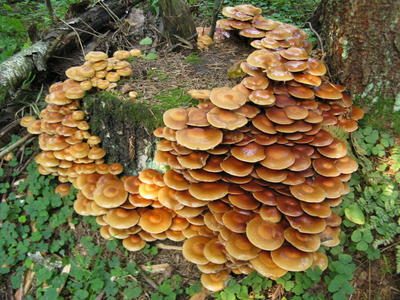
If you yourself belong to the category of “quiet hunting” lovers, then in order not to get poisoned by false mushrooms, even with many years of mushroom picking experience, you should not harvest in unfavorable areas. The list of such dangerous places includes:
- ecologically unfavorable regions;
- motorways with a large flow of cars;
- factories and other hazardous industries;
- automated or regular parking;
- railroad tracks where operating trains pass;
- landfills.
Answering the question: is it possible to be poisoned by mushrooms that have undergone a conservation or drying procedure, you need to give an affirmative answer. Even if the mushroom was originally edible, under improper storage conditions, it can turn into a source of toxins.
If you are going to do your own cooking with mushrooms, then experts recommend carefully processing them. They should not only be washed, but also soaked. During heat treatment, it is enough to leave mushrooms in a basin for soaking for three hours. If the mushrooms are to be preserved, then they should be soaked for at least three days. In this case, you need to change the water regularly.
In order to prevent the transformation of mushroom delicacy into poison, they should be stored only in the recommended dishes:
- clay,
- aluminum,
- galvanized.
Instead of a conclusion
If you are sure that you really ate real mushrooms suitable for food, but the departure nevertheless occurred, the reason should be sought in the property of mushrooms to absorb heavy compounds. Often they accumulate heavy metals:
- mercury,
- lead,
- zinc,
- cadmium.
According to laboratory studies, mushrooms are considered to be that rare species of mushrooms that are able to accumulate especially much cobalt harmful to humans in their tissues.
To avoid a serious impact on all body systems, doctors unanimously advise buying mushrooms only in supermarkets or stores where they undergo a preliminary radiological examination.
Mushroom lovers are familiar with mushrooms, which are popular due to their availability and great taste. However, both novice mushroom pickers and experienced mushroom pickers know that in autumn forest you can find not only tasty and useful mushrooms, but also their "false" counterparts. Therefore, it is important to know what false mushrooms look like and how they differ from edible ones.
Knowing the signs of poisoning and first aid rules will help protect yourself from possible severe intoxication which can lead to disastrous consequences.
Learning to Spot the Differences
To fully enjoy the taste of healthy mushroom dishes without health consequences, you need to know the main differences between edible and inedible mushrooms.
Let's see what these differences are.
You should know that these poisonous mushrooms have several varieties, each of which is characterized by distinctive features.
- brick red. The center of the cap has a reddish or orange tint, and the edges are painted yellow. The plates near the legs are gray or olive. The mushroom has a specific smell and yellow flesh. You can meet this variety of mushrooms on stumps or near them. At the same time, they are especially prolific in late summer and early autumn;
- the sulfur-yellow mushroom poses the greatest danger, because it is most similar to its edible counterpart. True, an attentive person can easily find signs of toxicity. His hat will give out, which is most often yellow without the slightest sign of scales. The complete absence of a film connecting the leg and the cap will be another sign that you do not need to eat such a mushroom. The end of spring, all summer and the beginning of autumn, these false mushrooms grow on rotten trees or stumps;
- a small watery hat that will begin to crack after breaking, as well as black or grayish-pink plates under it, will indicate that you have a false Candoll mushroom in front of you. It has a thin and smooth leg, which is shaggy on top. Rotten tree bark deciduous trees is a favorite place for the growth of these mushrooms.
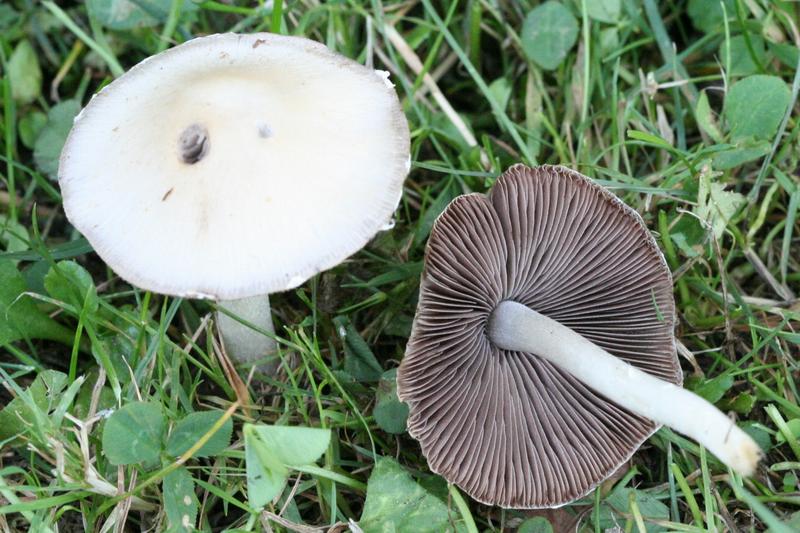
This information will help protect not only inexperienced mushroom pickers from poisoning, but also people who buy mushrooms. After all, their sellers may be the very same experienced mushroom pickers.
The danger of edible mushrooms
There are cases when medical care with acute intoxication people who ate edible mushrooms were treated. What is it connected with? Is it possible to get poisoned by mushrooms if there is absolute certainty that they are not poisonous?
Yes, there is such a possibility.. This is due to several reasons.
Firstly, if mushrooms were collected in places near which industrial zones, roads or railways are located, there is a high risk that they have absorbed many harmful substances. Copper, mercury, lead and cobalt is an incomplete list of metals that contain such mushrooms.
Secondly, poisoning will be inevitable if harmful substances have accumulated in mushrooms as a result of improper storage or poor cooking.
The consequences of hazardous exposure can only be avoided if qualified medical care is provided on time.
Manifestation of intoxication
As a rule, poisoning with false mushrooms manifests itself almost immediately after eating them. However, in some cases, the body will respond after 6-12 hours.
Toxins that came to a person along with mushrooms almost instantly enter the blood. After that, they spread to all organs, poisoning them with toxic substances. The digestive system will suffer the most.
The symptoms of this type of intoxication are similar to acute gastroenteritis, and it is quite easy to recognize them. They appear like this:
- nausea accompanied by vomiting;
- skin blanching;
- multiple loose stools;
- general weakness and malaise;
- severe pain in the abdomen.

If edible mushrooms poisoned with toxic compounds were eaten, the following are added to the described signs:
- severe attacks of headache and dizziness;
- bloating and discomfort in this area;
- sharp pain in the intestines;
- manifestation of dehydration due to intoxication.
As soon as the first signs of poisoning appear, it is urgent to seek qualified help from a doctor. The sooner this is done, the less likely it is that toxins will enter the bloodstream and begin their destructive action.
Important! If shortly after the first signs of poisoning appeared, any disorders of the nervous system (strong desire to sleep, lethargy, hallucinations, or others) were added to them, a person needs emergency help physicians.
Without drug treatment, depression of cardiac activity, expressed in a decrease in pressure and a weak heartbeat, is added to the signs of intoxication, the skin turns blue, and the extremities become cold.
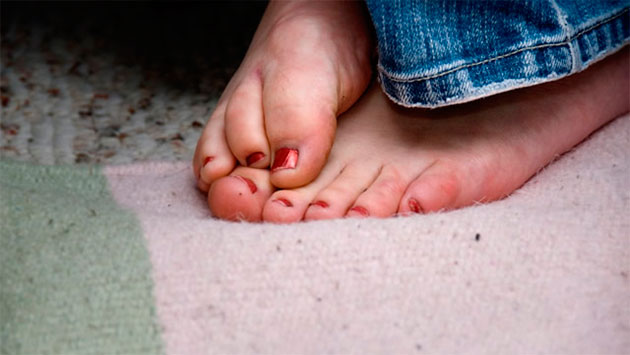
Despite the fact that cases of death from poisoning with these mushrooms are recorded quite rarely, the consequences of intoxication without proper treatment will be very deplorable.
First aid and treatment
The first thing the victim or his relatives should do is call an ambulance.
After that, it is necessary to perform procedures aimed at the fastest possible removal of intoxication:
- Clear gastrointestinal tract. To do this, provoke a gag reflex, giving the victim to drink at least a liter of boiled water. As soon as the vomit becomes similar to plain water, we can assume that the stomach is empty. It is possible to clear the stomach with vomiting only if it is not an independent symptom. In this case, it is enough to replenish the water balance in the body.
- After cleansing the stomach, activated charcoal is taken.
- Replenish the water balance by drinking a quarter cup of boiled or mineral water without gas every 10-15 minutes. Invaluable assistance in this matter will be provided by vegetable and chicken broths. Any liquid at this time should be drunk in small sips, slowly, so as not to provoke another bout of vomiting.
- In the event that a person has lost consciousness, he must be laid on his side and his tongue fixed so that he does not cause suffocation.
- If the victim feels chills, warm his hands and feet with heating pads.
- It is important to replenish strength and sleep as much as possible. At this time, you should not go outside, especially in the hot season, because along with sweat, fluid will come out, which the body already lacks.

Note! Taking any painkillers in case of poisoning is strictly prohibited! Since they will remove important signs of intoxication, it will be difficult for doctors to prescribe the correct treatment. Moreover, they can cause a deterioration in the patient's well-being.
Despite the importance of first aid, do not overestimate your own knowledge in the medical industry: only a qualified physician will be able to prescribe the correct treatment. Moreover, the specialist will inject the necessary drugs directly into the blood, which will quickly get rid of the poisoning. Properly selected treatment also depends on age, gender, type of heat treatment of mushrooms.
If the treatment is carried out correctly and on time, then the victim feels healthy in a few days.
How to avoid poisoning?
There are several ways to avoid such unpleasant consequences from mushroom dishes.
- you need to collect only those mushrooms in the forest, in the safety of which you are absolutely sure;
- exclude collection near places that saturate mushrooms with harmful heavy metals or toxic substances;
- to buy mushrooms on the market or not, each person decides for himself. Here, knowledge of the differences between false and edible mushrooms, of course, will help in choosing. But it is unlikely that the seller will want to tell where these mushrooms were collected;
- observe the rules of storage and preparation. Wash mushrooms thoroughly before cooking. It is advisable to soak them for several hours, and in the case of canning, for several days, constantly changing the water;
- storage of mushrooms is carried out in earthenware or aluminum dishes.
Knowledge of these simple rules will allow you to enjoy the taste of delicious mushroom dishes without any harm to health.
Honey mushrooms - autumn mushrooms, which can be found in the forest on stumps, rotten tree trunks.
Mushroom pickers love these mushrooms for their tender flesh, pleasant taste. In one place you can dial a large number of mushrooms, as they grow in large families.
Mushrooms - the collective name of several types of mushrooms, similar in appearance and growing in similar places. vernacular name reflects the characteristics of the growth of these fungi. But they are also found in meadows.
Real young edible mushrooms have an almost spherical hat, which becomes like an umbrella with age, and then flattens even more. The color of the cap varies from beige and yellow to reddish brown.
There is a small tubercle in the center of the cap, and the surface is covered with brownish scales, which are absent in old mushrooms. The center of the cap is colored more intensely, towards the edge the coloring becomes paler.
From below, the edges of the cap are connected to the leg with a white film. The leg is up to 18 cm long. Unlike other types of mushrooms, the meadow mushroom grows on the soil and is found in meadows, along roads, in gardens and forest clearings.
Among the edible species, the following varieties are very popular among mushroom pickers:
- autumn;
- thick-legged;
- summer;
- winter;
- spring;
- yellow-red;
- meadow;
- slimy;
- garlic etc.
Due to the wide variety of species, edible mushrooms are often confused with poisonous counterparts.
Like edible mushrooms, the name "false mushrooms" refers to mushrooms belonging to different genera and families:
- hypholoma;
- psatirella.
In addition to poisonous species, there are false mushrooms classified as conditionally edible. However, their safety when eaten is questionable, and experienced mushroom pickers advise against the risk of collecting them along with common, edible species.
Their preparation requires different conditions, so mixing mushrooms is not recommended. Poisonous species include:
- gray-yellow false foam;
- brick-red false foam;
- false honeycomb Candoll;
- watery false foam.
The main difference between false mushrooms and edible species is:
When collecting or buying mushrooms, you need not only to know the differences between false poisonous mushrooms and edible ones, but also the methods of providing first aid in case of poisoning.
Even a few poisonous false mushrooms in a basket can spoil all the mushrooms and cause severe intoxication.
Symptoms of poisoning and first aid
The first symptoms of poisoning appear after 1-6 hours, depending on the dose of toxic substances.
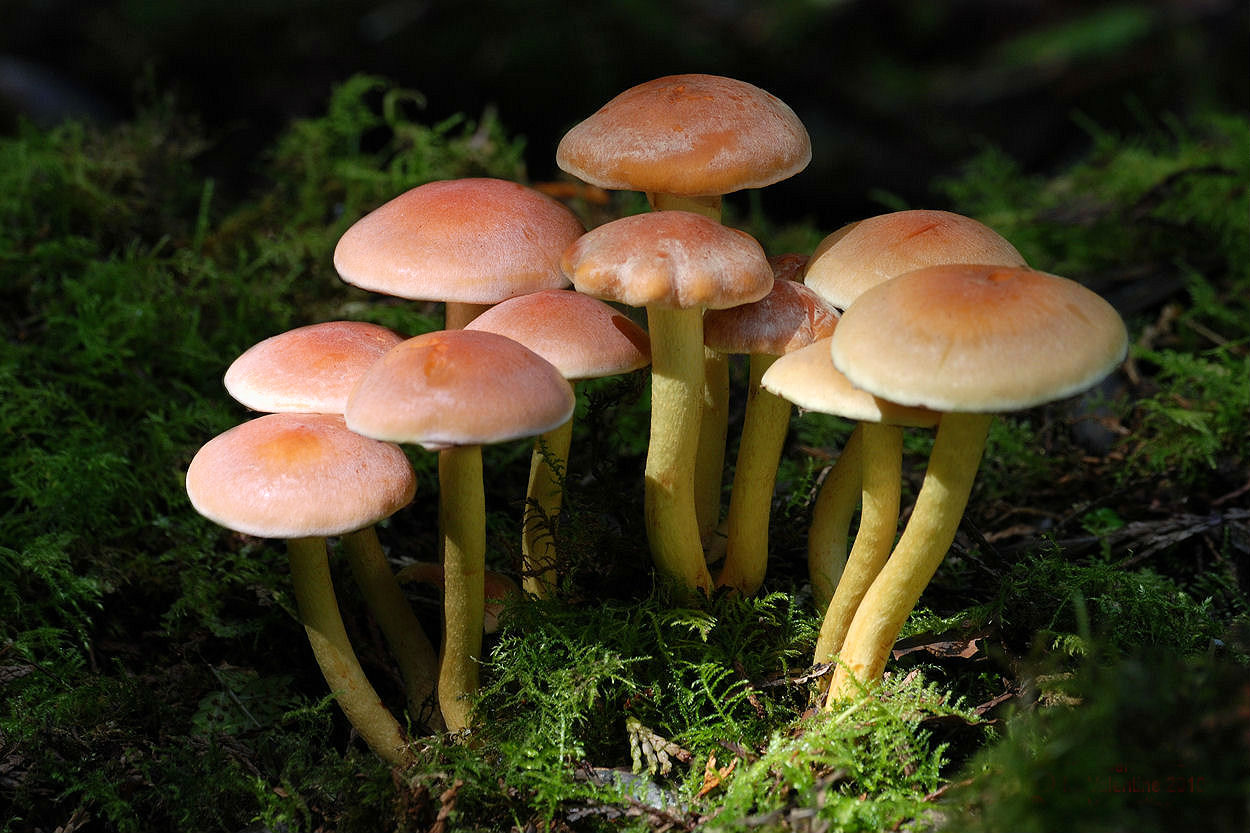
Signs of poisoning are similar to food poisoning and appear:
- nausea and vomiting;
- diarrhea
- pain sensations in the abdomen.
The milky juice secreted by false mushrooms has an irritating effect on the mucous membranes. oral cavity and intestines. In order to get rid of poisoning, you must perform the following steps:
- cleanse the stomach and intestines from the contents - drink a few glasses of warm salted water and induce vomiting, put a cleansing enema or take a laxative;
- take enterosorbent -, Enterosorb, activated carbon or rice decoction;
- go to bed to keep warm;
- you can put mustard plasters on your feet.
As a rule, the symptoms of poisoning disappear after a while. If the poisoning could not be stopped, then you should seek medical help.
Poisoning can also occur when eating edible mushrooms if they:
- collected in polluted and environmentally hazardous areas;
- long-term storage at room temperature;
- do not follow the rules of heat treatment.
False mushrooms growing in our latitudes cannot cause severe poisoning, but you need to be careful when collecting and cooking mushrooms to avoid food poisoning, even in a mild form.
It is not recommended to collect old mushrooms, harmful substances accumulate in them, and poisonous mushrooms growing nearby can poison them with their spores. Children under 8-12 years old should not eat dishes with mushrooms, as they still do not have enough enzymes to digest mushrooms. Their number decreases with age, so older people are not recommended to eat mushrooms.
Honey mushrooms are autumn mushrooms loved by many. But few people know that they can provoke severe food poisoning. In this article, we examined poisoning with false mushrooms, edible mushrooms, the main causes, symptoms and treatment for these pathological conditions.
Reasons for the development of poisoning
 Many are interested in whether it is possible to get poisoned by mushrooms? As it turned out, dangerous human body are not only false mushrooms, but also edible species honey agaric.
Many are interested in whether it is possible to get poisoned by mushrooms? As it turned out, dangerous human body are not only false mushrooms, but also edible species honey agaric.
Below are the main causes of mushroom poisoning.
- Accidental ingestion of false mushrooms. These mushrooms are very similar in appearance and taste to their edible relatives, but unlike them, they are poisonous and very dangerous for humans.
- Eating edible mushrooms grown in polluted areas. Mushrooms, like sponges, absorb all substances from the air and soil. They can accumulate radioactive nuclides, mercury, copper, nitrates, pesticides, carcinogens. Mushrooms collected along highways, railways, near large industrial facilities are considered especially dangerous.
- Cooking food from spoiled and rotten mushrooms. At long-term storage these mushrooms deteriorate and become unfit for consumption.
The clinical picture of honey mushroom poisoning
Honey mushroom poisoning is clinically manifested large quantity symptoms. They come in 1-2 hours after the use of these mushrooms inside. Symptoms and signs of poisoning with mushrooms and false mushrooms differ from each other, and lead to different consequences.
Symptoms of intoxication with false mushrooms
![]() After what time do the first signs of intoxication with false mushrooms appear? The first symptoms appear within 10-20 minutes after ingestion. Symptoms develop acutely, leading to a rapid violation of the condition of the victim.
After what time do the first signs of intoxication with false mushrooms appear? The first symptoms appear within 10-20 minutes after ingestion. Symptoms develop acutely, leading to a rapid violation of the condition of the victim.
The main clinical signs of poisoning:
- severe dizziness and lack of coordination. It seems to the patient that the earth is slipping from under his feet;
- nausea and vomiting. These symptoms are provoked by irritation of the gastric mucosa and dizziness. Vomiting first consists of food eaten, and then of gastric juice and bile;
- respiratory failure. It becomes very superficial, frequent, shortness of breath develops. The patient feels short of breath;
- vivid hallucinations can be auditory, tactile, or visual;
- diarrhea during intoxication with false mushrooms is abundant and frequent. It leads to the rapid development of dehydration and electrolyte disturbances;
- convulsions, which may be local or general;
- impaired consciousness to the level of coma.
Symptoms of edible mushroom poisoning
Symptoms of poisoning with edible mushrooms develop during the first two hours. You can get poisoned with salted, pickled, fried and stewed mushrooms.
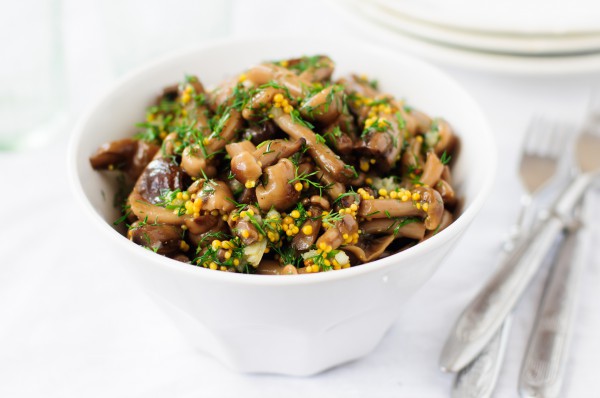 Signs of intoxication with edible mushrooms include:
Signs of intoxication with edible mushrooms include:
- nausea and vomiting;
- diarrhea;
- pain in the stomach, intestines;
- heartburn and belching;
- general weakness;
- headache;
- an increase in body temperature to 37.5 degrees;
- increased gas formation in the intestines.
First aid for mushroom poisoning
With the development of the first clinical manifestations of fungal poisoning, an ambulance should be called. List the symptoms of the patient in detail to the dispatcher and give the exact address.
Please note that in case of honey mushroom poisoning, treatment is carried out in a hospital. Trying to cope with the disease on your own is dangerous, as it can lead to serious complications and death.
While the SMP team is on the way, you need to start providing first aid to the victim. In some cases it is the prognosis for the life of the patient depends on it.
The components of first aid for poisoning with edible or false mushrooms are described below.
![]() The first thing to do when clinical signs of fungal poisoning appear is to wash the stomach. You can do this at home.
The first thing to do when clinical signs of fungal poisoning appear is to wash the stomach. You can do this at home.
In order to wash the stomach, you need to drink 1 liter of plain water in one gulp and vomit it. It is advisable to repeat this procedure several times in a row.
Thanks to gastric lavage, it is possible to prevent the absorption into the blood of toxins that have not yet had time to be digested. This is an effective and accessible procedure for everyone.
Remember that it is strictly forbidden to wash the stomach with a solution of potassium permanganate. It can worsen the patient's condition.
Purgation
With the help of an enema, you can cleanse the intestines of toxins and elements of poisoned food, reduce the manifestations of intoxication. At home, an enema is carried out using plain boiled water. room temperature. It is forbidden to add any medicines to it. An enema is carried out until clear and clean washings appear.
Sorbents
Sorbents are the only medications that should be drunk in case of mushroom poisoning before the arrival of doctors. These drugs neutralize toxins and remove them from the intestines.
 Sorbents should be washed down with plenty of water. The liquid accelerates their action. Dosing of drugs is calculated according to the patient's weight or age. Read the instructions carefully before taking them.
Sorbents should be washed down with plenty of water. The liquid accelerates their action. Dosing of drugs is calculated according to the patient's weight or age. Read the instructions carefully before taking them.
Preparations:
- smecta;
- Activated carbon;
- white coal;
- enterosgel;
- sorbex.
Plentiful drink
A dehydrated body needs fluid. You need to drink in small sips little by little and often. You can drink mineral or table water without gases.
Features of medical treatment
The doctors who came to you on a call will conduct an examination and assess the patient's condition. They will check his pulse, blood oxygen saturation (saturation), blood pressure and respiratory rate. Tell them in detail about the amount of first aid you provided.
 Before transporting the patient to the hospital, ambulance doctors stabilize his condition. If necessary, they can perform gastric lavage through a tube, connect the patient to a drip and oxygen, and administer antiemetics and painkillers.
Before transporting the patient to the hospital, ambulance doctors stabilize his condition. If necessary, they can perform gastric lavage through a tube, connect the patient to a drip and oxygen, and administer antiemetics and painkillers.
Treatment for mushroom poisoning is carried out in intensive care or a toxicological hospital. Its duration depends on the severity of the patient's condition. In case of mild poisoning, they can be discharged on the third day.
Inpatient treatment consists of:
- therapeutic diet food;
- bed rest;
- intravenous administration of solutions to eliminate dehydration;
- hemodialysis - cleansing the blood of toxins with the help of an artificial kidney, is carried out with intoxication with false honey agarics;
- normalization of the cardiovascular system, kidneys, liver, pancreas.
Patient examination
To identify complications, make the correct diagnosis and select effective therapy, the doctor may need the results of additional laboratory and instrumental studies. Mushroom poisoning can cause disturbances in the functioning of various organs and systems. These complications need to be identified and treated promptly.
Examination for poisoning with honey agarics is carried out in parallel with the provision of first aid and with the stabilization of the condition. It includes the following diagnostic methods:
- a general detailed blood test helps to identify hemolysis, anemia, the presence of an acute inflammatory process in the body, and it can also be used to approximately assess the degree of dehydration;
- a general urine test is necessary to assess the functional activity of the kidneys and to identify their damage. The kidneys are among the first to be affected by the consumption of poisonous mushroom species;
- biochemical blood test - necessary to detect electrolyte shifts in the blood, disruption of work internal organs;
- electrocardiography (ECG) - needed to evaluate the heart rhythm, which can be disturbed due to electrolyte shift and dehydration;
- an ultrasound examination of the internal organs is performed to detect pathology from the liver, gallbladder, pancreas and kidneys.
Please note that you do not need to throw it away immediately mushroom dish that poisoned the person. It may be required for laboratory detection of toxins and poisons.
Prevention of mushroom poisoning
Mushroom poisoning can be easily avoided. It is much easier to prevent it than to treat the consequences of fungal intoxication. Below are the main recommendations that will help you protect yourself and loved ones from honey mushroom poisoning.
- Buy mushrooms only in stores and official markets. Avoid purchasing these goods, so to speak, from the hands of mushroom pickers.
- Check the integrity and freshness of the mushrooms. In fresh mushrooms, the cap does not easily separate from the leg.
- Spend the right heat treatment mushrooms.
- When picking mushrooms, choose ecologically clean areas, away from major roads and factories.
Mushroom poisoning can occur as a result of eating spoiled and low-quality edible mushrooms or after accidentally eating poisonous varieties of mushrooms. Treatment of such fungal intoxication is carried out in a hospital. At the first signs of poisoning, you need to call an ambulance. Self-medication can lead to permanent disability and even death.






